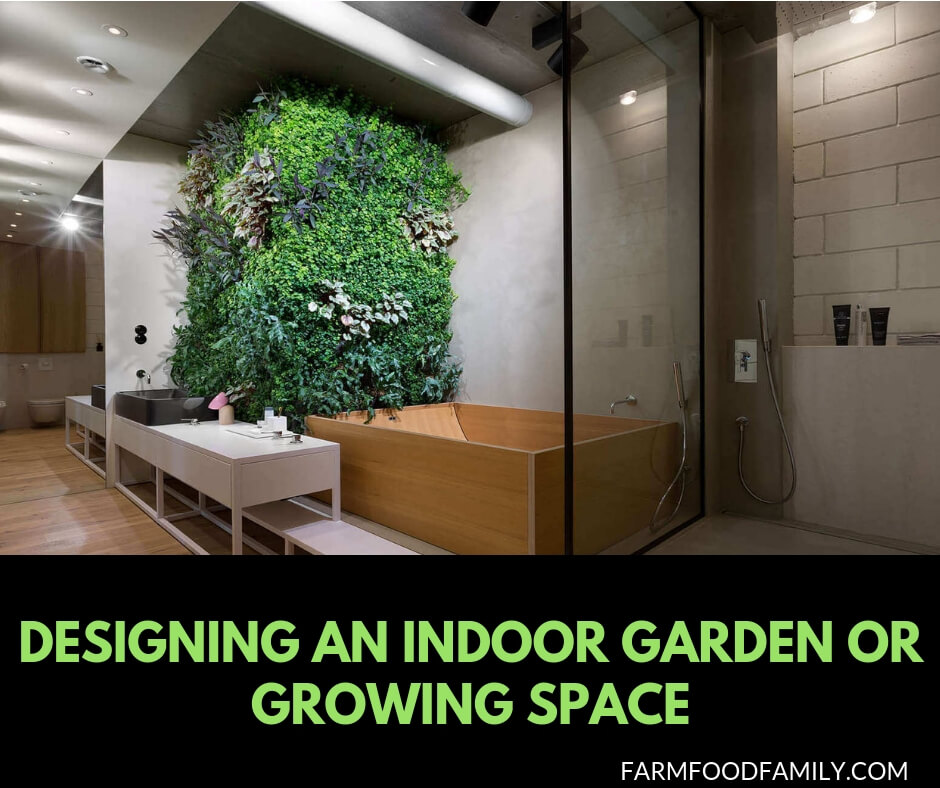Indoor gardens offer a year round experience for experienced and novice gardeners alike. With a completely controlled environment anything can be grown.
The reasons for having an indoor garden are as varied as the varieties of plants that can be grown in one. The advantages are many, the disadvantages few, and the ease with which one can be set up puts it in line with putting together a TV stand from Wal-Mart.
Why Design an Indoor Garden

The number one reason for having an indoor garden, whether it is a greenhouse, solarium, or porch, is the ability to control the environment.
With control over the temperature, humidity, light, and soil there is no plant that cannot be grown indoors. Indoor gardening is also quite popular in urban areas where access to planting areas is very limited.
Container gardens can be utilized on even the most compact apartment balcony or in extreme cases a south facing windowsill.
The design of an indoor growing space can be aesthetic, utilitarian, or in the right hands, both. With no restriction on plant choice an indoor garden can become a cut flower garden, a specialized rose or specimen garden, a vegetable garden, a water garden, or any combination of these.
The only limitation is available space and even that can be overcome with a little imagination.
One of the most interesting uses for an indoor garden is to grow medicinal herbs. There are literally hundreds of plants that can be grown as treatments for just about as many illnesses.
A Respiratory Illness Garden, for example, can be grown on a front porch for people with a range of respiratory complications.
Considerations for Installing an Indoor Garden
Where is the garden going to be?
What planting medium is going to be used?
What type of lighting will the garden have?
How will the temperature be controlled?

The first thing to consider with the installation of an indoor garden is where it is going to be on the property. If it is an apartment then the choice is a simple one. If the garden is going to be on a property with the option of a greenhouse then it is a little harder.
This is generally a budget decision, but it might just be that a smaller garden is wanted. If a greenhouse is the choice do some shopping around and check out the different types available. If the choice is a front porch or other room with large windows space planning will be key.
The second thing to do when planning an indoor garden is to decide on the growing medium, either traditional soil or hydroponic. This is almost always a budget choice as well.
A hydroponic setup will cost more initially and will require diligent use of water soluble plant foods. The traditional soil garden needs only containers, which can range from reclaimed milk jugs to fully built square foot gardening tables, and standard fertilizer.
A third consideration is lighting. If the choice of room provides adequate light year round then there is no need to augment it with grow lights (although this isn’t out of the question, having a backup light source for particularly needy plants could be a lifesaver).
If lighting is needed it can usually be purchased at a local home improvement store at a much better price than at the garden shop.
Temperature control is as vital as soil and lighting. Plants will only germinate under certain conditions. It is advisable to have a heating mat to help plants germinate as this will keep soil temperatures constant while allowing for a slightly cooler air temperature.
Depending on the type and placement of a garden within a home the temperature may fluctuate throughout the year. For a vegetable garden it is just as easy to vary the climate for seasonal vegetables as it would be to have them outdoors (simply match the indoor temperature to that of the outdoor).
What to Plant in an Indoor Garden

Deciding on what type of garden to have is a whole different animal. With no limitations the only concern is what types of plants thrive in an indoor setting.
In general anything that can be grown outside may be grown inside. The easiest plants are those with small root systems simply because large root systems may outgrow the container where they are planted.
A good rule of thumb is to have a container that is one gallon for each foot of height that the plant will reach (this is not true for vining plants). Vegetable gardens and even small orchards (including lemons, limes, apples, dwarf bananas, and several other fruiting trees) can be grown indoors.
Reinventing a room and using it as an indoor garden can be quite therapeutic. Using it as a medicinal garden could double as a way to treat an illness and a stress reliever. Even if only a small portion of the indoor area is devoted to this type of garden it could be well worth it.


